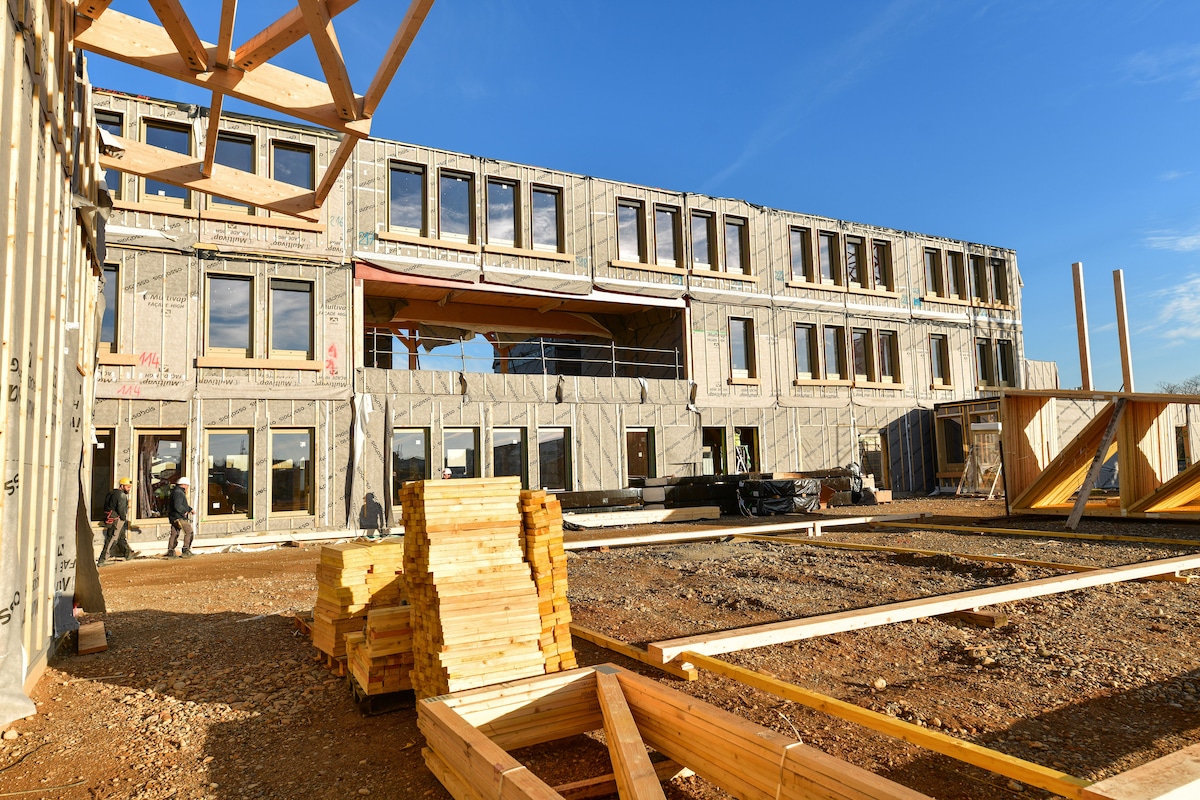Products You May Like
Construction of a timber-frame secondary school in Saint-Priest, France in 2020. Andia / Universal Images Group via Getty Images

Why you can trust us
Founded in 2005 as an Ohio-based environmental newspaper, EcoWatch is a digital platform dedicated to publishing quality, science-based content on environmental issues, causes, and solutions.
One of the challenges urban planners face as they attempt to fashion climate-friendly cities is how to construct new buildings. Common materials steel and cement are notoriously difficult to decarbonize, yet the number of people living in cities could increase to 80 percent of the total population by 2100, potentially requiring more new construction between now and 2050 than between now and the start of the industrial revolution.
To meet this need without burning through humanity’s remaining carbon budget, the authors of a new study published in Nature Communications Tuesday have proposed a surprising solution.
“We can house the new urban population in mid-rise buildings — that is 4 to 12 stories — made out of wood,” study lead author and Potsdam Institute for Climate Impact Research (PIK) scientist Abhijeet Mishra said in a press release.
Heavy industry is responsible for almost 40 percent of carbon dioxide emissions worldwide, and steel and cement production are two of the three most-emitting heavy industries, according to the Brookings Institution. The current process of making steel requires coal both to generate enough heat and to chemically transform iron ore into iron. Cement production releases carbon dioxide during the chemical process that derives calcium oxide from limestone. Producing raw materials including cement and steel for new buildings was responsible for 10 percent of carbon emissions in 2020, and using these same materials for new construction could use up 35 to 60 percent of the carbon we can still burn and keep global warming below two degrees Celsius, the study authors noted.
In comparison, building with wood has many benefits.
“Wood is a renewable resource that usually carries the lowest carbon footprint of any comparable, first-time use, and building material,” the study authors wrote. “Moreover, the carbon stored in wood, which was absorbed from atmospheric CO2 via photosynthesis, is partly preserved when the wood is used as a building material, making it a long-term carbon sink.”
The researchers calculated that if new, mid-rise wooden buildings could be constructed for 90 percent of new city dwellers, it would save 106 gigatonnes of carbon dioxide emissions by 2100. The new buildings wouldn’t be built from the plywood planks of single-family homes, but rather cross-laminated timber, a product in which wood is layered in a strong but lightweight construction that can be used for taller buildings, The Hill explained.
Still, all of this wood would need to come from somewhere, and this is where some environmentalists sound the alarm. The study authors calculated that the wooden cities of the future would require a 149-million hectare increase in tree plantations by 2100, as well as more harvesting from unprotected natural forests. They said this could be achieved without seriously impacting food production. However, tree plantations have less biodiversity than natural forests, and some green advocates balked at a plan that would see any of the latter cleared.
“It would be a disaster for nature and for the climate,” Sini Eräjää, Greenpeace’s European food and forests campaign lead, told The Guardian. “Natural, biodiverse forests are more resilient to drought, fires and disease, so are a much safer carbon store than the tree plantations we’ve seen go up in smoke this summer from Portugal to California. Wood can play a bigger role in construction but to double the world’s tree plantations at the expense of priceless nature is just bonkers, when modest reductions in meat and dairy farming would free up the land needed.”
The study authors acknowledged the importance of woodland biodiversity and said it was essential that all currently protected forests remain that way.
“The explicit safeguarding of these protected areas is key, but still, the establishment of timber plantations at the cost of other non-protected natural areas could thereby further increase a future loss of biodiversity,” study co-author Alexander Popp, who leads the land use management group at PIK, said in the press release.
The researchers echoed the sentiment that reducing land use for meat and dairy production was one way to provide space for more harvested trees. Ultimately, the study reveals that there is an opportunity for the construction and land-use sectors to work together on climate solutions.
“The key challenge for global sustainability is the deep co-transformation of land use and construction,” study co-author and Director Emeritus of the Potsdam Institute for Climate Impact Research John Schellnhuber said in the press release. “If carefully integrated, these two sectors can remove and store crucial amounts of carbon from the atmosphere without jeopardizing food security or biodiversity. This could become the climate solution we have been desperately looking for.”
Subscribe to get exclusive updates in our daily newsletter!
By signing up, you agree to the Terms of Use and Privacy Policy & to receive electronic communications from EcoWatch Media Group, which may include marketing promotions, advertisements and sponsored content.
